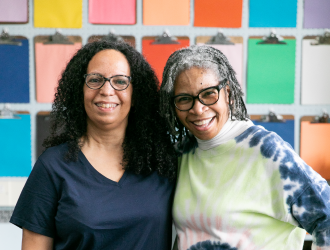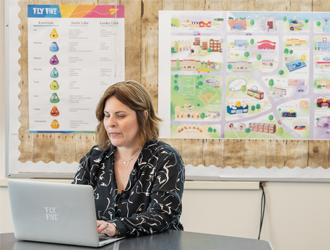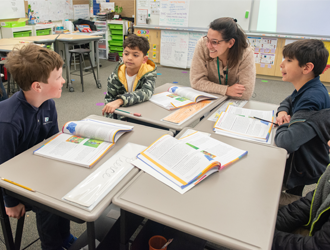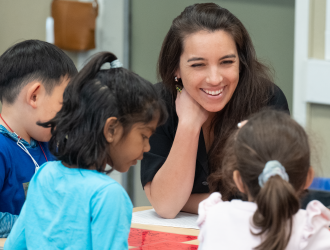Ways to Foster Belonging
We know that students thrive when they feel like they’re a part of a community, but how do we achieve this? Through open conversations, a representative environment, collaborative reflections, and increased trust, feelings of belonging in and out of the classroom will grow. Consider these ways below to build authentic relationships in the classroom and foster feelings of belonging.

Prioritizing belonging in the classroom is an important part of student success and safety. Using community connections, structured conversations, and open communication between teachers and students and their families, allows for feelings of belonging to continue to grow. Research shows that when students feel seen and heard, they are seven times more likely to feel motivated to learn (Quaglia Institute, 2016). Open conversations and reflection opportunities will encourage students to open up to their peers and educators.

Build Authentic Relationships
- Collaborate and listen. When teachers and school administrators listen to student needs, they deepen their understanding of what each individual learner experiences in and out of the classroom. Listening to student needs helps adults in the community understand student influences, motivations, perceptions, and experiences. When educators and students build authentic relationships over time, it will make clear their interests and values, and help educators anticipate student reactions in positive or challenging situations.
- Increase trust. Show students they can trust you. Follow through on what you say. If a student needs support, reach out to them. Treat the class with respect, and maintain dignity in relationships through ups and downs. If students know that they can trust their teacher, they are more likely to open up and share stories or ask for help.
- Investigate. Take what you’ve learned from open and honest conversations with your students and create projects that incorporate cultural connections or personal identities that make learners feel seen. Using personalized and relatable projects can help students feel an increased sense of belonging (Bowen, 2021). When educators show that students’ complex identities add value to the school community, students are more likely to be open about and take pride in what makes them different.

Create a Fun and Inclusive Space
Convincing students that they are meant to be in the class can be a difficult but rewarding process. Consider these three ways to engage your students and help foster their feelings of belonging:
- Structured conversations. Engage in conversations that help students understand that worrying about belonging is normal, and explore why they feel the way they do and how teachers can help. Framing belonging as a process instead of a fixed goal helps increase student achievement and decrease inequalities over time (Walton, 2021).
- Have one open desk. Although it’s not always possible, an open desk in the classroom signifies a sign of transition or change. If a student joins the class halfway through the year, having an open desk available to them shows that there’s a dedicated space to help ease a difficult transition (Dunlea, 2019). It also shows other students in class that the environment is flexible and supportive—ready to change and grow at any time.
- Join in on the fun. Hosting daily physical activities, like a dance break to a student’s favorite song, can help students feel confident and increase participation (Hatcher, 2018). During movement activities, it can be fun for educators to join in and demonstrate leadership. When students see educators breaking out of their shell, they’re more likely to do so as well.
Student motivation and feelings of belonging are more likely to increase as educators set conditions for them to be their authentic selves. Through open and honest student-led communication, collaborative classwork, and space for joyful moments, class environments can become a place where all students feel welcome.
References
Bowen, J. (2021, October 21). Why is it important for students to feel a sense of belonging at school? ‘Students choose to be in environments that make them feel a sense of fit,’ says associate professor, DeLeon Gray. NC State University College of Education News. https://ced.ncsu.edu/news/2021/10/21/why-is-it-important-for-students-to-feel-a-sense-of-belonging-at-school-students-choose-to-be-in-environments-that-make-them-feel-a-sense-of-fit-says-associate-professor-deleon-gra/
Dunlea, M. (2019, September 4). Every student matters: Cultivating belonging in the classroom. Edutopia.
https://www.edutopia.org/article/every-student-matters-cultivating-belonging-classroom
Hatcher, D. (2018, June 28). 4 ways to foster belonging through physical activity. EducationWeek.
https://www.edweek.org/education/opinion-4-ways-to-foster-belonging-through-physical-activity/2018/06
Quaglia Institute. (2016). School voice report 2016. https://quagliainstitute.org/dmsView/School_Voice_Report_2016
Walton, G. (2021, November 9). Stop telling students, ‘you belong!’. EducationWeek.
https://www.edweek.org/leadership/opinion-stop-telling-students-you-belong/2021/11








